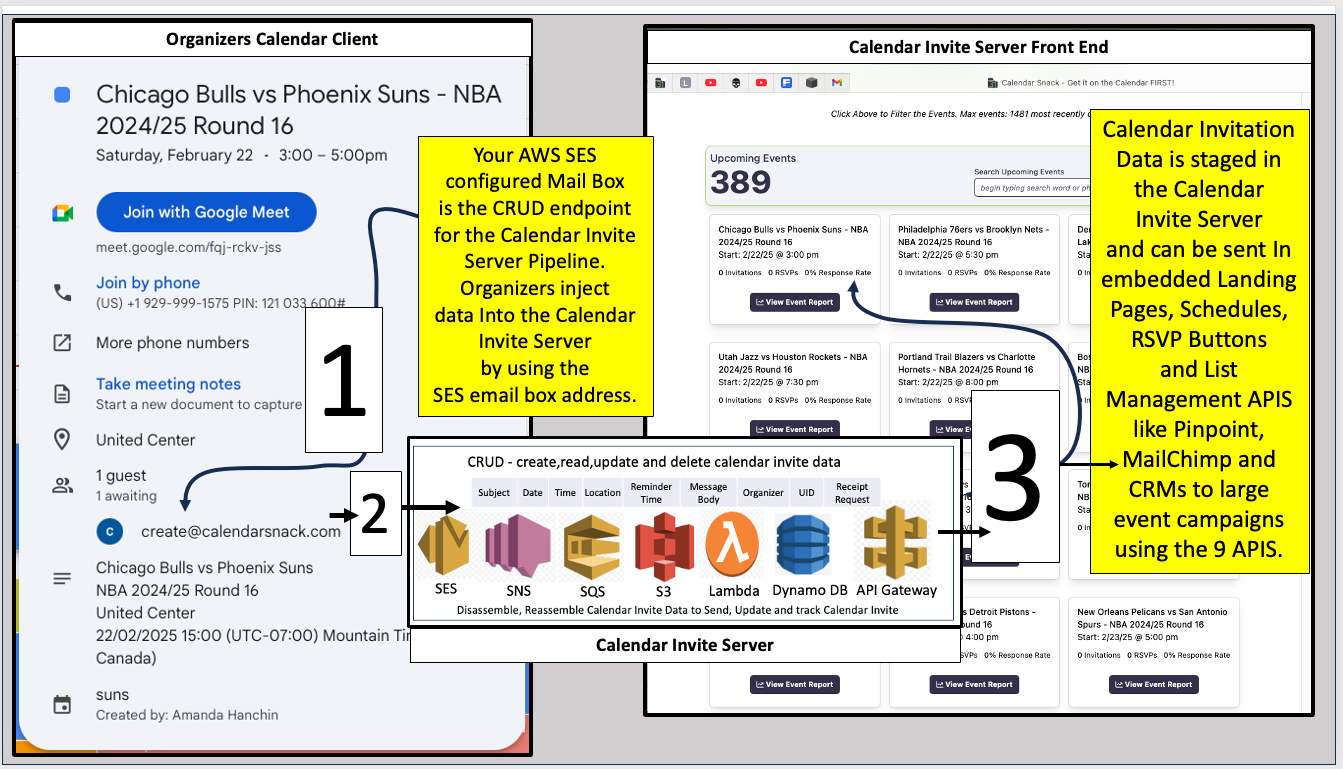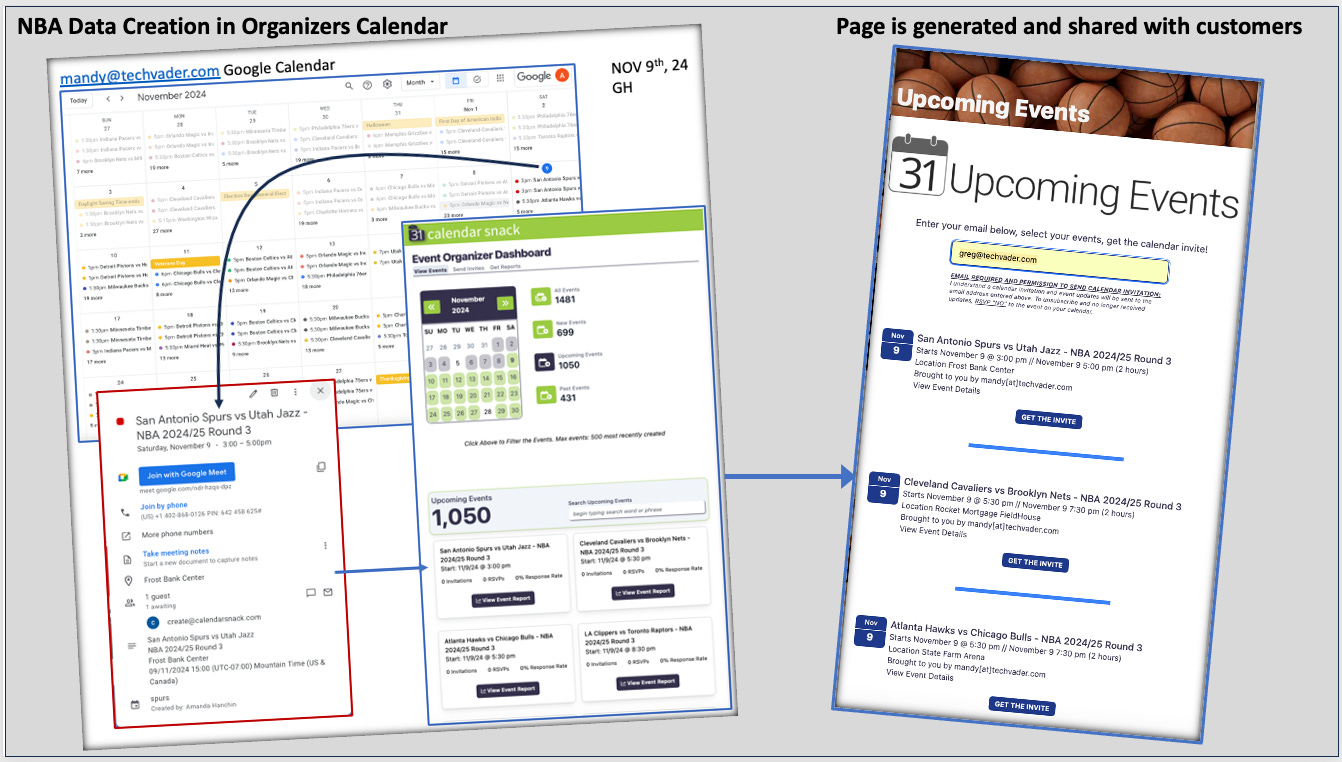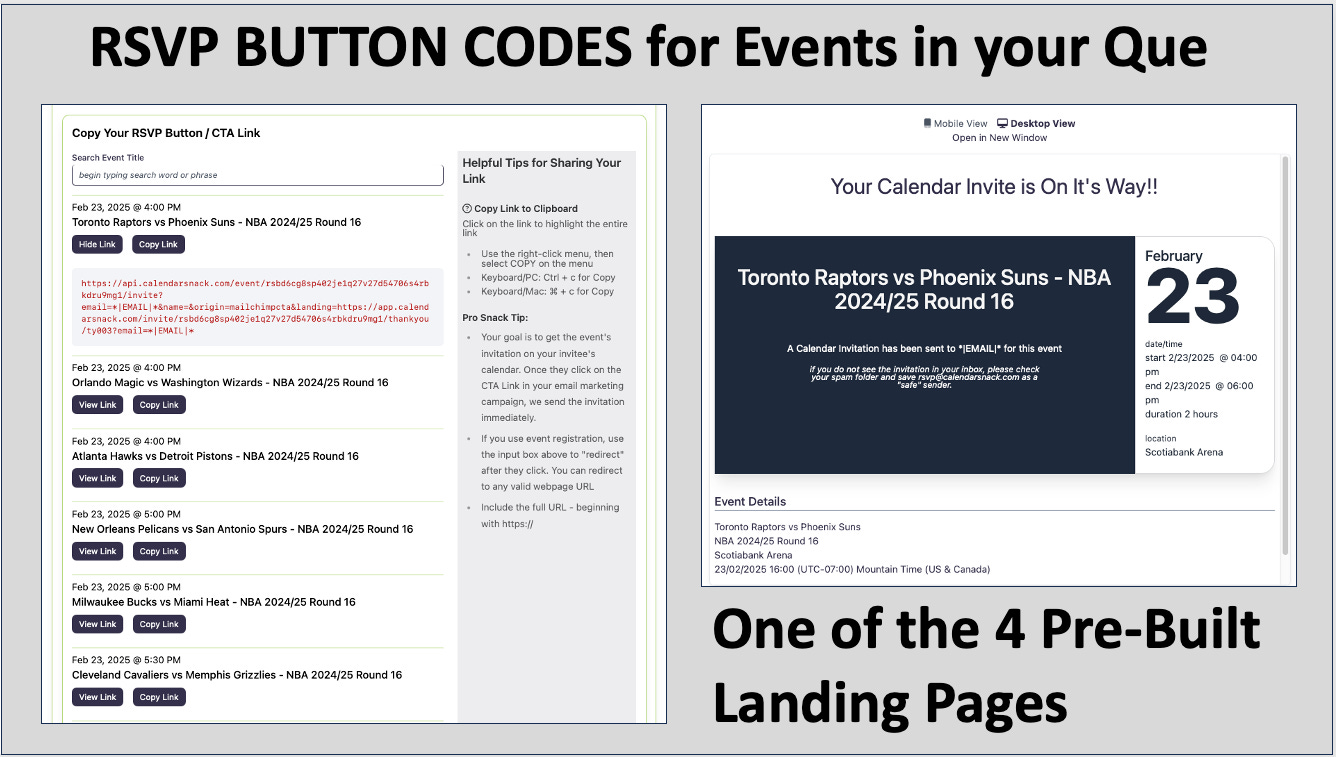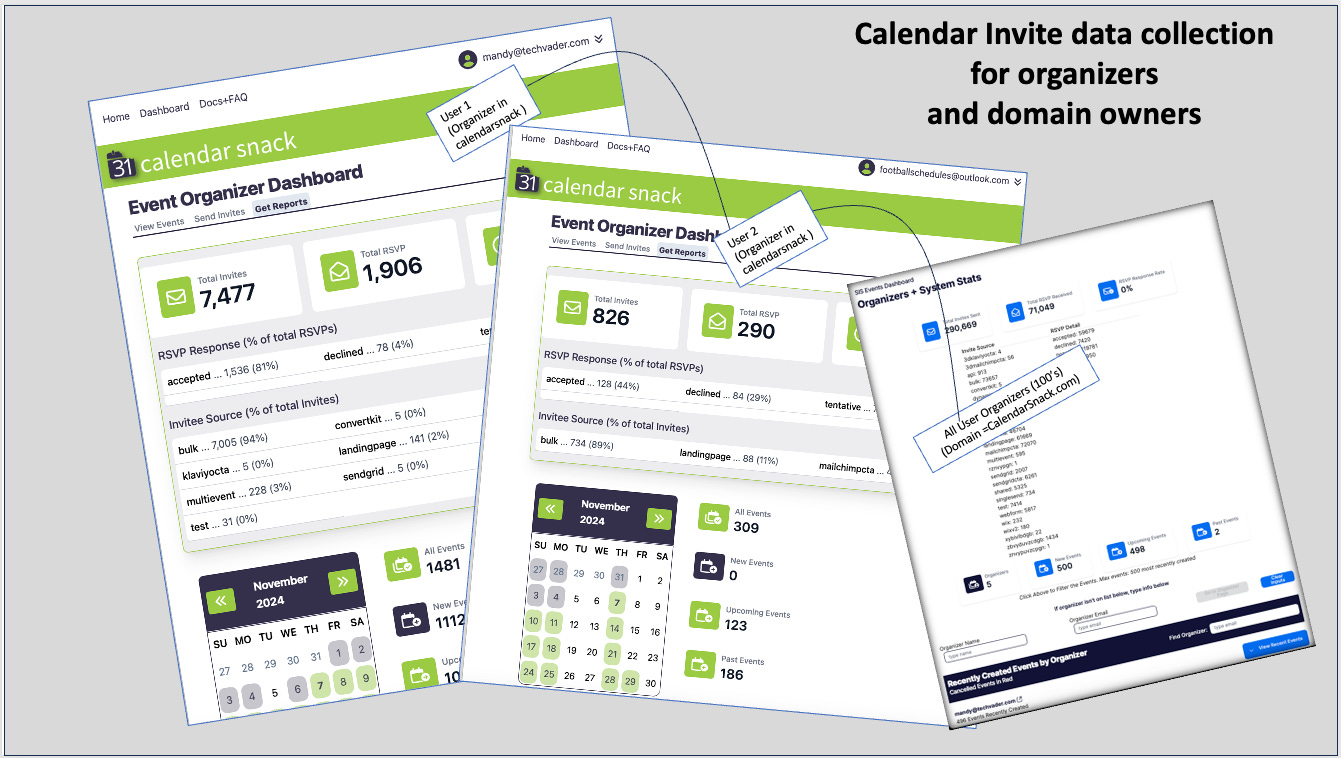Don't Panic - Sending Millions of Calendar Invites is permitted on AWS
Why? - Permission based Calendar Invites are better than emails for Event based Marketing
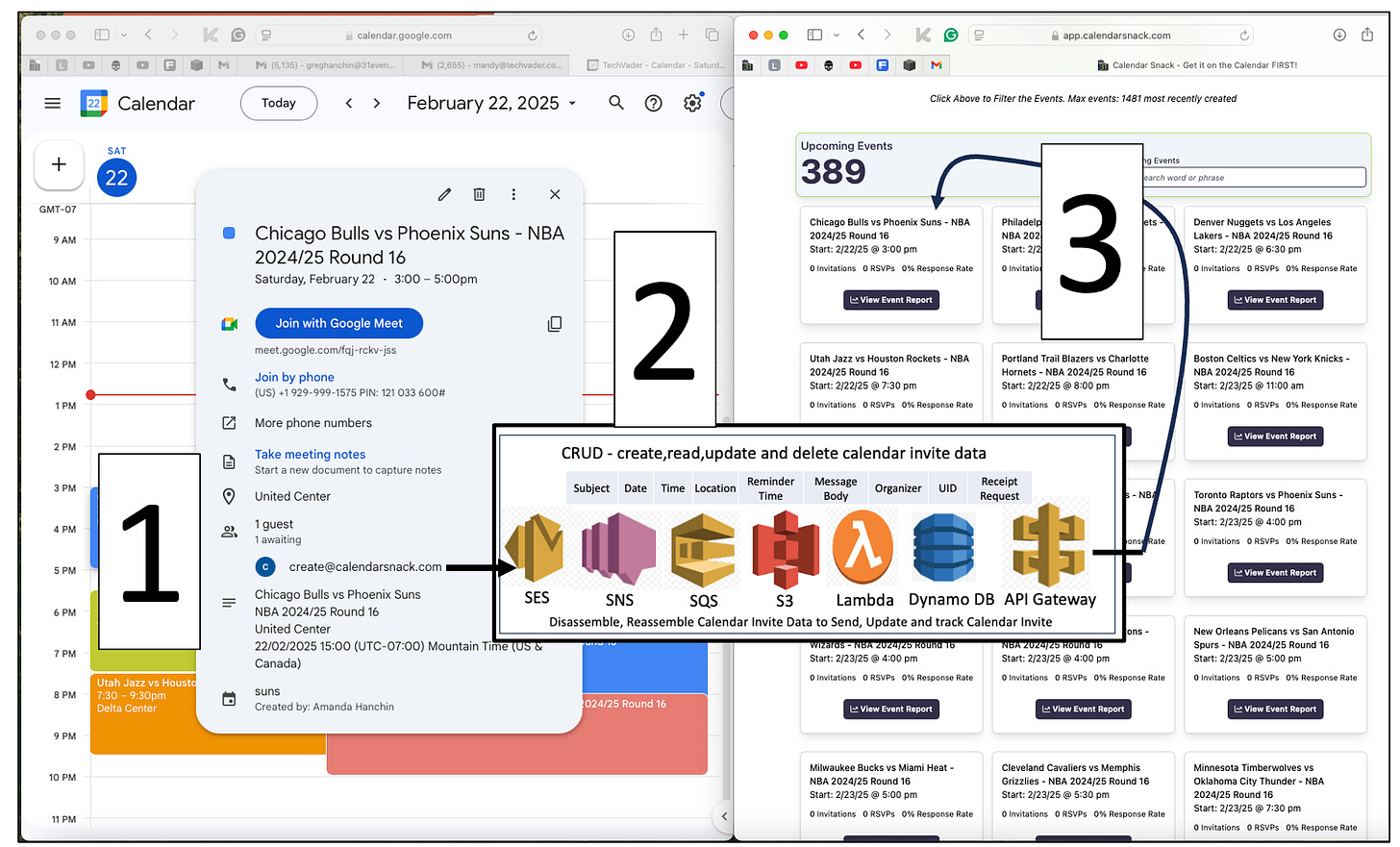
The Calendar Invite Pipeline for SES
Sending a calendar invite to the AWS SES mailbox for the Calendar Invite Server (CIS) gets data into the pipeline and assigns an Event UID for the calendar invite data. The sender's email becomes the Organizer's Name in the Database.
Anytime the data is changed in the organizer's Calendar Client and saved, it is resent to the AWS SES email box and updated in the Calendar Invite Server pipeline.
We mechanically mimic the Calendar Client to the AWS Serverless Functions we have built for Create, Read, Update and Delete, starting with using the email address you configure for your users to send their calendar invites to be processed using a series of functions we expose in the Calendar Invite Server code through the APIS and LAMBDA functions available on GitHub.
In the NBA game schedule in this posting, we sent the calendar invites to the AWS SES box configured called create@calendarsnack.com and displayed the data in the Dashboard for Sending and Data Collection of the Calendar Invites for customer campaigns using there AWS Server-less stack.
An alternative to sending the single Calendar Invite to the configured Email box is a batch method of saving a List of Events as a CVS with the correct labels as an attachment file and sending it to the Email Box as a registered organizer.
This function takes the File, parses the events using the Calendar Invite ETL Functions we built, and preps the data for the same APIs.
Think of the Worlds Sporting Events for Professional, College, and High School as an example of streaming to the Upcoming Events Page from bulk uploading tens of thousands of events in an automated pipeline.
The Calendar Receipt data is tracked for each of the independent calendar invites sent.
Event Organizer Dashboard
One the data is in the Calendar Invite Sever you can now use the API’s and Functions to send calendar invite using AWS SES.
We include these four solution as a starter in the Calendar Invite Server application front end. I walk through these below.
How - Embedded Calendar Invite Pages
The Get API request is formatted with the VUE.JS application to insert the Calendar Invites into the page in chronicle order with the exposed calendar invite details. The Email Box is adjacent to the Calendar Invite data on the page. When a customer puts the email address in the box, they can click the button and receive the calendar invite from the Calendar Invite API #3.
How? - I generated the Upcoming Events Pages in the Calendar Invite Server interface which took less than 5 minutes to generate and get the URLS to publish and promote the events coming up.
How - Sending Calendar Invites in a Batch
The Get API request is formatted with the VUE.JS application to insert a Email List into the browser with a wait command of two seconds to insert the email address into the Calendar Invite Send API #3.
How? I took my email list and saved as .TXT and uploaded to the interface and then selected my event and then gave the send button interface a “YES” to validate the send.
Big How? This interface above was built to send in batches of 1,000 in the browser. It works really well for quick jobs such as sending out a calendar invite instead of a reminder email.
We do have another drop box concept interface that is designed to send 10,000 in a batch which we have done for customers. That is not exposed here.
It’s part of the Calendar Invite Server API’s and Lambdas if you purchase the Calendar Invite Server.
Think MailChimp, Send Grid, AWS PinPoint Large List Managers. This is the large untapped market to send millions of calendar invites by OEMS and Email Marketing Agencies that we built the AWS Calendar Invite Server for.
How - RSVP Button
10 years ago we created the RSVP Button.
That was prior to the AWS build we are in now. 1 Millions Calendar Invite Sends, 4000 free customers across the world on AWS SES. 18 Countries. Using native language to populate the Calendar Invites is still a cool to see.
How - Send a calendar invite to the AWS SES Mailbox. This kicks off a function in the Calendar Invite Server and sends back to the organizer email address the RSVP Button code is ready to embed into the email marketing platform.
When the CTA embed is inserted into the Email Marketing platform a Calendar Invite is sent and tracked and the user is sent to a landing page of their choice.
Once the RSVP Button code is deployed it’s run through the standard testing process with the Email Marketing Vendors prior to sending.
If there are any changes needed then the Organizer can go back and tweak those in the calendar invite sent to the calendar invite server and those changes will flow to the RSVP Button.
How - Calendar Invite data is collected and Reported
The Calendar Invite Server APIs and Functions collect and store Calendar Invite Receipt Data in the AWS storage layer from any Calendar Invites sent on the AWS SES account.
Anytime the data is changed on the Calendar Invite sent from the Organizer to the Calendar Invite Server, the AWS data pipeline is updated and the new Calendar Invite data is sent to customers Calendar Client that received a calendar invite from the AWS UID registered with service. Data Changes, Event Updates, Venue Changes and Time Changes.
All that data is gathered in the Data reporting panels and APIs in the example above.
How - Calendar Invite Server Data for Organizers and Domain works
Users within the AWS Domain can see the individual data sets in the Dashboards as well as the Domain Super User. Or all User data within the domain.
The detailed breakdown within the search window of all events and detailed search in the search bar.
Here is a more detailed view for an event I sent to earlier today as we staged data for the demo and screen shots.



